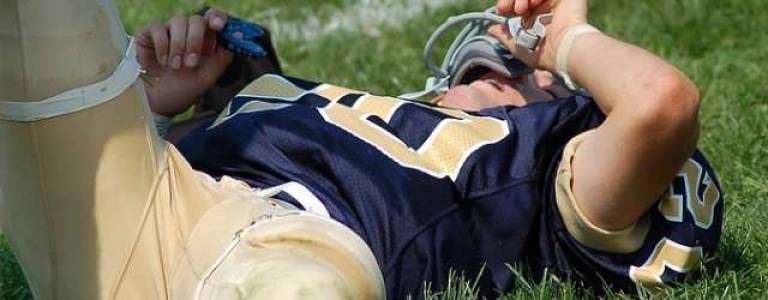Head blows from just one season of high school football affects the brain

Repeated impacts to the heads of high school football players cause measurable changes in their brains, even when no concussion occurs, according to research from UT Southwestern Medical Center’s Peter O’Donnell Jr. Brain Institute and Wake Forest University School of Medicine.
Researchers gathered data from high school varsity players who donned specially outfitted helmets that recorded data on each head impact during practice and regular games. They then used experimental techniques to measure changes in cellular microstructure in the brains of the players before, during, and after the season.
“Our findings add to a growing body of literature demonstrating that a single season of contact sports can result in brain changes regardless of clinical findings or concussion diagnosis,” said senior author Dr. Joseph Maldjian, Chief of the Neuroradiology Division and Director of the Advanced Neuroscience Imaging Research Lab, part of the Peter O’Donnell Jr. Brain Institute at UT Southwestern.
In the study, appearing in the Journal of Neurotrauma, a team of investigators at UT Southwestern, Wake Forest University Medical Center, and Children’s National Medical Center evaluated about two dozen players over the course of a single football season. The group of players was not large enough to draw conclusions about the differences in impacts between positions, researchers said, and additional studies will be needed to determine what the deviations mean clinically for individuals.
“Studies like this are important to understand how and where long-term damage might be occurring, so that we can then take the necessary steps to prevent it,” said first author Dr. Elizabeth Davenport, a postdoctoral researcher in the Department of Radiology and the Advanced Imaging Research Center at UT Southwestern.
Football has the highest concussion rate of any competitive contact sport, and there is growing concern — reflected in the recent decrease in participation in the Pop Warner youth football program – among parents, coaches, and physicians of youth athletes about the effects of subconcussive head impacts, those not directly resulting in a concussion diagnosis, researchers noted. Previous research has focused primarily on college football players, but recent studies have shown impact distributions for youth and high school players to be similar to those seen at the college level, with differences primarily in the highest impact magnitudes and total number of impacts, the researchers noted.
Source: UT Southwestern Medical Center: utsouthwestern.edu